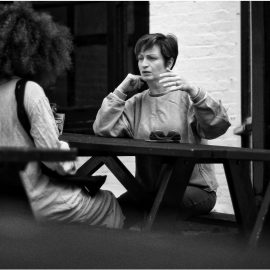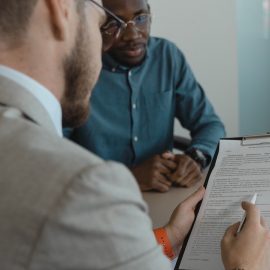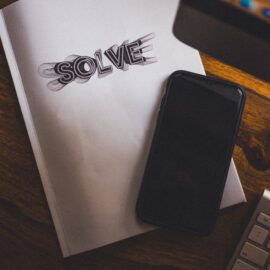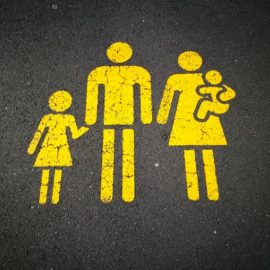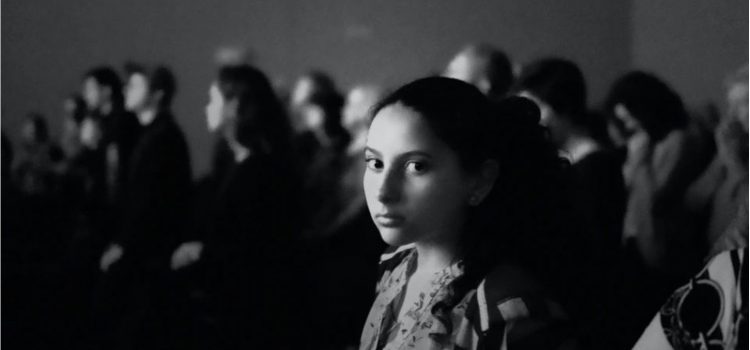
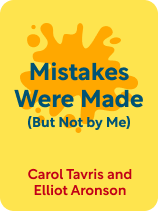
This article is an excerpt from the Shortform book guide to "Mistakes Were Made (But Not by Me)" by Carol Tavris and Elliot Aronson. Shortform has the world's best summaries and analyses of books you should be reading.
Like this article? Sign up for a free trial here.
What is the psychology behind prejudice? Why do people stereotype others?
Being discriminatory toward others is a horrible thing, but some people try to excuse it. In Mistakes Were Made (But Not by Me), Carol Tavris and Elliot Aronson explain why some people’s brains stereotype others.
Read more to learn the psychology of prejudice and why some people discriminate against others.
Stereotypes and Prejudice
One specific means of harming others that our brains skillfully justify is having prejudice—predetermined opinions about a group of people that aren’t based on reason or experience. The authors argue there’s a psychology of prejudice—everyone is capable of prejudice because of the way our brains work, and we naturally organize information into categories that become stereotypes when applied to other people.
(Shortform note: In Biased, Jennifer Eberhardt expands on Tavris and Aronson’s assertion that categorization is a normal aspect of human brain function, stating that it’s necessary to help us process the enormous amount of information we encounter every day. At the same time, it becomes problematic when we apply it to other people. According to Eberhardt, studies show that we’re predisposed to focus on faces we’ve sorted into a “like me” category, and we block out or ignore other faces. This means that our brains see the faces of people in our own race as individuals with distinct features, while we perceive people of other races as part of a general group.)
Stereotypes can be advantageous—they allow us to make choices using past experiences, recognize important differences between groups of people, and judge how others will likely act in a given situation.
(Shortform note: While stereotypes may save you some cognitive energy, you should never rely on them as a guide for how to treat others as they’re inherently reductive. To deconstruct the stereotypes that you hold, use a technique called negative empiricism, as outlined by Nassim Nicholas Taleb in The Black Swan. Negative empiricism involves seeking out information that disproves your original belief. For example, say you think women aren’t as good at math and science as men. To disprove this stereotype, you could look for examples of women’s achievements in the STEM field or research the barriers women have to overcome to be successful in STEM.)
However, stereotypes also harmfully emphasize the differences between groups of people and diminish the differences within groups of people. They allow us to make generalizations about another group that justify our poor treatment of them while maintaining our sense of righteousness, and these generalizations can turn into prejudices.
(Shortform note: Many stereotypes serve as justifications for wide societal inequalities, not just the bad treatment of individuals. These are called pathological stereotypes. Instead of finding fault with the system, we explain social and economic disparities by placing fault with the people in the lower social position. For example, there are many unfounded, harmful stereotypes that help justify poverty—that poor people are lazy, that they don’t want to work, that they’re not interested in education, that they abuse drugs and alcohol, and so on.)
Self-Justification and Prejudice
The design of the brain also makes it difficult to identify prejudice in ourselves. The authors argue that this is because the brain is built to convince us we aren’t biased—it persuades us that our perception of reality is clear and accurate (a phenomenon called naive realism). We believe that if an opinion wasn’t reasonable, we wouldn’t have it, so other fair, good, reasonable people will see things the same way we do.
(Shortform note: As Tavris and Aronson state, we’re biased to think that what we perceive is objective reality, but this belief is entirely false. Our brains are constantly fed raw data from our sensory organs—eyes, ears, mouth, nose, tongue, and skin—which the brain then ascribes subjective meaning to. From a neuroscience perspective, without the brain’s ability to interpret, information is meaningless. Therefore, everyone’s reality is based solely on perception, which is inherently subjective. For example, in 2015, a picture of a dress went viral because half the internet saw the dress as white and gold while the other half saw a blue and black dress, proving that two people can look at the same picture and see something completely different.)
We justify our prejudices with the belief that our hostility toward other groups of people is reasonable and warranted (or else, we wouldn’t feel it), and it’s the other group that needs to change.
(Shortform note: Research suggests that it’s much easier to maintain prejudice against a group of people than it is to hate an individual. When you hate a whole group, you’re less likely to be confronted with a specific person from that group and thus with any information that contradicts your prejudices. In contrast, when you hate an individual, you’re much more likely to gain empathy for that person or experience something that shows a positive side of them that you didn’t see before. Studies conducted in conflict regions showed that 80 percent of people telling stories about people they hated mentioned groups instead of individuals.)
That being said, most of us still aren’t truly comfortable with our prejudices, the authors argue. Our negative feelings about another group of people conflict with our understanding that it’s morally or socially unacceptable to feel that way. This threatens our view of ourselves as good people and creates uncomfortable dissonance with our perceived righteousness, which we dispel through further self-justification. We self-justify by reinforcing our belief in harmful stereotypes (for example, the belief that the other group is violent, unintelligent, or untrustworthy). This cycle allows us to continue causing harm to the group while maintaining our sense of righteousness.
(Shortform note: No matter how empathetic or open-minded we try to be, we’re all susceptible to the prejudices and biases described here. What matters most is how we address them. Instead of self-justifying to alleviate the discomfort of your biases and consequently harmfully acting on those biases, try actively working against them. One way to do this is by identifying your implicit biases—attitudes towards people or stereotypes we associate with them without conscious awareness. You can do this using an implicit bias test, like Harvard’s Implicit Association Test (IAT). When you become conscious of your implicit biases, you can more easily identify and counteract patterns of thinking that support them.)

———End of Preview———
Like what you just read? Read the rest of the world's best book summary and analysis of Carol Tavris and Elliot Aronson's "Mistakes Were Made (But Not by Me)" at Shortform.
Here's what you'll find in our full Mistakes Were Made (But Not by Me) summary:
- Why we feel discomfort when we act in a way that doesn't align with our values
- How patterns of self-justification can cause our beliefs to diverge sharply from other people’s
- How we can break the cycle of self-justification and hold ourselves accountable

